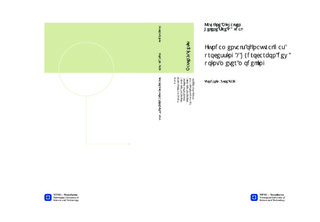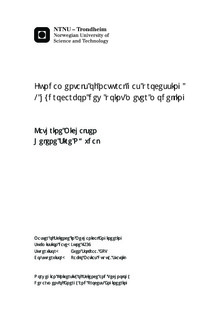| dc.contributor.advisor | Solbraa, Even | nb_NO |
| dc.contributor.advisor | Dupuy, Pablo Matias | nb_NO |
| dc.contributor.author | Michalsen, Kathrine | nb_NO |
| dc.contributor.author | Nævdal, Helene Sire | nb_NO |
| dc.date.accessioned | 2014-12-19T11:52:32Z | |
| dc.date.available | 2014-12-19T11:52:32Z | |
| dc.date.created | 2014-09-13 | nb_NO |
| dc.date.issued | 2014 | nb_NO |
| dc.identifier | 746621 | nb_NO |
| dc.identifier | ntnudaim:11519 | nb_NO |
| dc.identifier.uri | http://hdl.handle.net/11250/235687 | |
| dc.description.abstract | When natural gas is taken from the reservoir it needs to be refined by removing liquid and other impurities in order to prevent hydrate formation in the pipelines and to keep the gas within sales specifications. Scrubbers, vertical separators, are used to remove the liquid and the efficiency of the scrubber has a great impact on the quality of the gas. To control the gas specifications and the efficiency of the scrubber, a dew point meter can be used. This tool will ideally provide the real dew point curve of the gas, which can prevent poor gas quality and damage on the equipment.In this thesis, a manual chilled mirror dew point unit developed by the Bureau of Mines is thermally analysed using the simulation software COMSOL Multiphysics. The dew point meter is operated by circulating a gas sample past a cold mirror to identify the temperature where condensate forms. The reason for this study is to get a deeper understanding on the thermal and thermodynamic phenomena in the unit and to study the need for modeling mass transfer and compositional gradients. The objective of this thesis is to improve fundamental understanding of the unit, decrease the uncertainties associated with the dew point test method and to provide results that can lead to future improvements.A simplified 3D model of the dew point unit has been used for the simulations. The parameters used are based on the experimental test rig at Statoil in Trondheim. Six different cases have been studied, where one or more parameters have been changed for each case to see how the changes affect the temperature in the unit. The simulations confirm that the coldest temperature is in the center of the mirror, and this is where the dew first will appear. The actual temperature at the center of the mirror surface has been found to be between 0.15 to 1.62 K higher than the temperature measured by the thermometer, depending on pressure, difference in chamber temperature and the velocity of the gas. Effects of compositional gradients due to thermal diffusion have shown to be present. New dew point temperatures have been calculated based on the new composition at the cold mirror. These results show dew point temperatures 0.31-1.11 K above the dew points calculated for the initial composition. | nb_NO |
| dc.language | eng | nb_NO |
| dc.publisher | Institutt for energi- og prosessteknikk | nb_NO |
| dc.title | Fundamentals of natural gas processing - hydrocarbon dew point meter modelling | nb_NO |
| dc.type | Master thesis | nb_NO |
| dc.source.pagenumber | 116 | nb_NO |
| dc.contributor.department | Norges teknisk-naturvitenskapelige universitet, Fakultet for ingeniørvitenskap og teknologi, Institutt for energi- og prosessteknikk | nb_NO |

